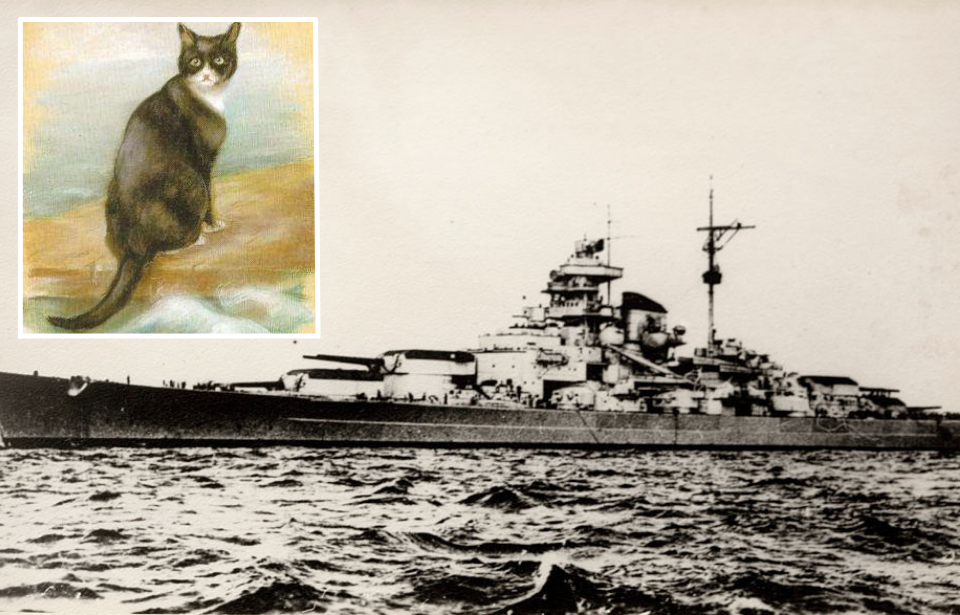Unsinkable Sam was the nickname given to a cat who reportedly survived the sinking of three ships during World War II. Also known as “Oscar,” he served with the German Kriegsmarine and the British Royal Navy, likely as a stowaway or a ship’s cat, keeping the rodent population under control – or did he? For many, his exploits appear to be the stuff of fiction.
Sinking of the battleship Bismarck
Bismarck was the first of two Bismarck-class battleships. She and her sister ship, Tirpitz, were the largest ever built by Germany and two of the largest to be commissioned by any European country.
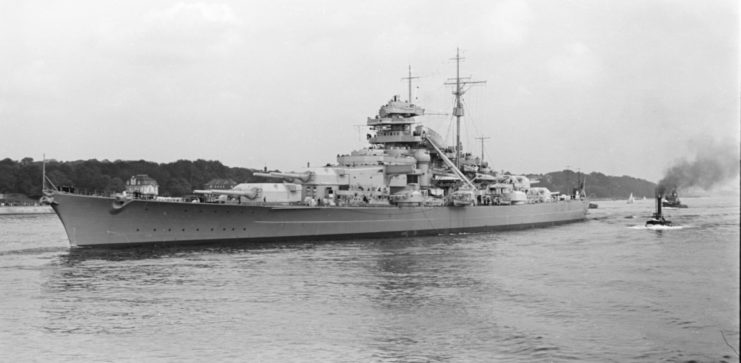
According to some accounts, an unknown crewman brought a cat aboard the battleship, and it was on board Bismarck on May 18, 1941, when it set off with heavy cruiser Prinz Eugen for Operation Rheinübung. The aim? To block Allied shipping to the United Kingdom.
The battleship was sunk following a fierce two-day sea battle. On May 26, she was hit by bombs from Fairey Swordfish biplanes, which had taken off from the Royal Navy‘s HMS Ark Royal (91). The next day, Bismarck became engaged with two Royal Navy heavy cruisers and two battleships, ultimately falling to their attacks. She was then scuttled by the Germans.
Of Bismarck‘s over 2,200 crew, only 115 survived.
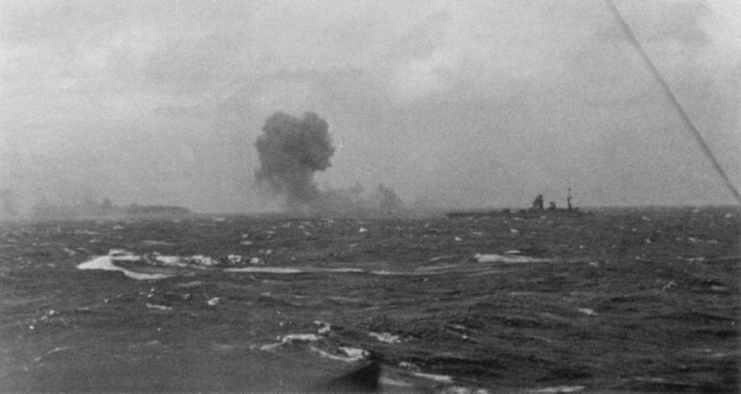
Hours after the sinking, the crew of British destroyer HMS Cossack (FO3) saw a cat floating on a board in the water. They rescued the feline and named it “Oscar,” after the International Code of Signals letter “O,” which stands for “Man Overboard.”
A Royal Navy ship sinks near Gibraltar
HMS Cossack made her name by rescuing sailors who’d originally been captured by the scuttled German pocket battleship Admiral Graf Spee and for her actions in the waters off Norway.
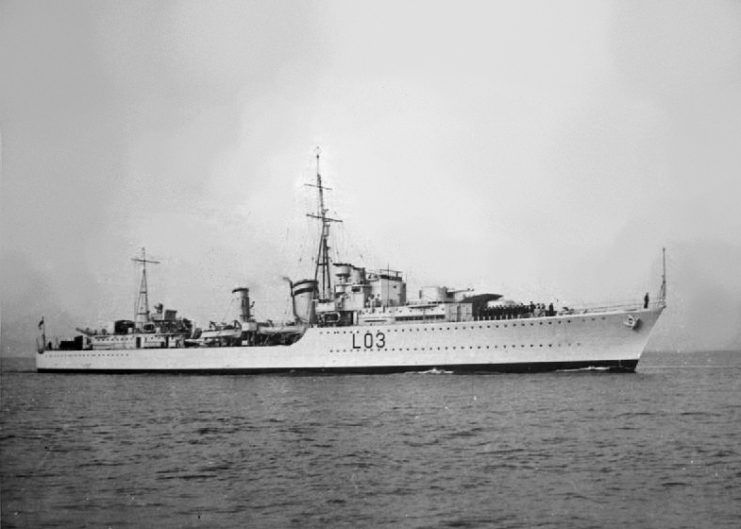
Oscar served aboard Cossack while it conducted convoy escorts in the north Atlantic Ocean and the Mediterranean Sea. The ship was escorting a convoy from Gibraltar to Britain on October 24, 1941 when it came under attack by German U-boat U-563. She suffered extensive damage, with the first torpedo hit blowing off one of the front sections, killing 159 crew members.
Oscar was one of the lucky ones to survive the incident and was transferred to destroyer HMS Legion (G74), which attempted to tow Cossack back to Gibraltar. This proved futile and she was later abandoned west of the British territory.
“Angry but quite unharmed” after the sinking of HMS Ark Royal
The aircraft carrier HMS Ark Royal operated in the most active theaters of WWII, including operations off the coast of Norway and the initial search for Bismarck. She was also involved in the first aerial U-boat kills of the conflict.
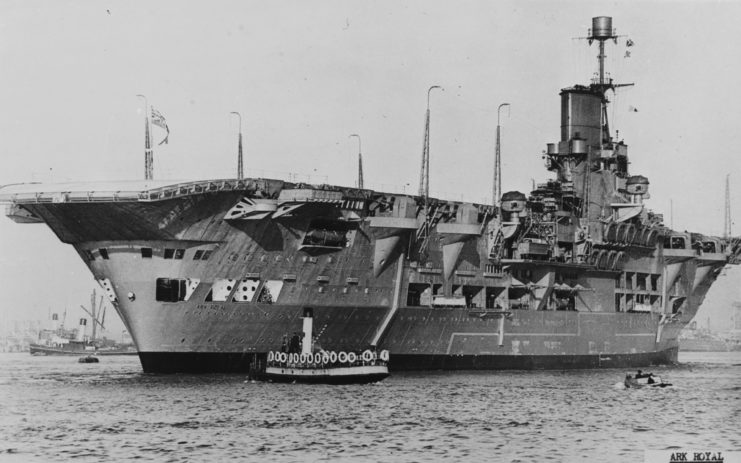
Following the sinking of Cossack, Oscar, by then known by the nickname “Unsinkable Sam,” was transferred to Ark Royal. On November 14, 1941, while returning from Malta, the ship was hit by a torpedo from U-boat U-81. She was severely damaged, and while attempts were made to tow her back to Gibraltar, she was later abandoned 30 miles from shore.
Despite her damage, the Ark Royal sank slowly, allowing all but one of her crew to escape. They, including Sam, were found clinging to a floating plank. The feline was said to be “angry but quite unharmed,” and was transferred to HMS Lightning (G55) and, later, back to HMS Legion.
Post-war retirement
The sinking of Ark Royal marked the end of Unsinkable Sam’s career aboard Royal Navy ships. He was sent to the Governor of Gibraltar, where he hunted miss in the office buildings. He later traveled to the UK, where he lived out the remainder of his days in Belfast’s Home for Sailors, a seaman’s house.
Sam passed away in 1955.

In recognition of his exploits, artist Georgina Shaw-Baker created a pastel portrait of Sam, which is currently in the possession of Greenwich’s National Maritime Museum.
Did Unsinkable Sam actually exist?
Unsinkable Sam definitely took advantage of his nine lives throughout his stint aboard naval ships, but how true is his story? For many, it seems too good to be true and, as such, they claim it’s an apocryphal sea story.
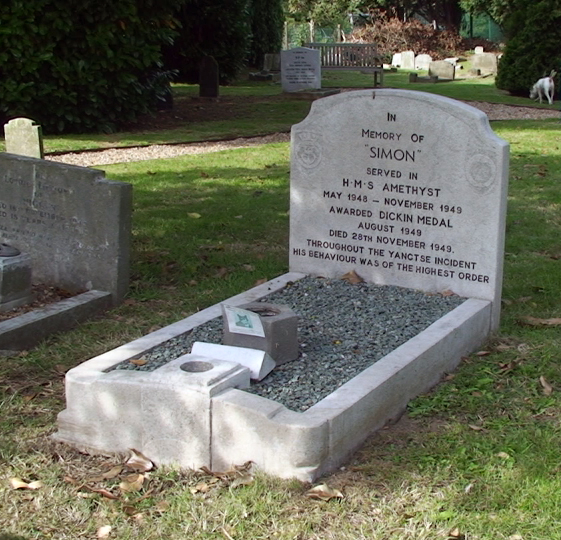
Those who hold this belief point toward the lack of evidence that Sam actually existed. There is no mention of him in journalist Ludovic Kennedy‘s account of Bismarck‘s sinking, nor are there any records showing a cat was brought aboard the battleship.
There’s also the issue of the cat’s changing appearance. There’s the aforementioned pastel portrait by Shaw-Baker and a photograph, showing a black-and-white tuxedo cat wearing a collar. However, a closer look at the collar shows the inscription “HMS Amethyst 1949,” meaning the feline pictured is actually Simon, who served aboard HMS Amethyst (F119).
There’s also a third photo that many claim to be Sam, but features a tabby cat, not one with tuxedo fur.
Are you a fan of all things ships and submarines? If so, subscribe to our Daily Warships newsletter!
While there are many who doubt the story’s validity, others believe it’s possible Sam did exist. They state the discrepancies with Bismarck‘s roster don’t necessarily mean the cat wasn’t on board the ship, as he could have been a stowaway. They also point toward the pastel portrait, claiming there’d be no reason to draw Sam if he hadn’t existed.
